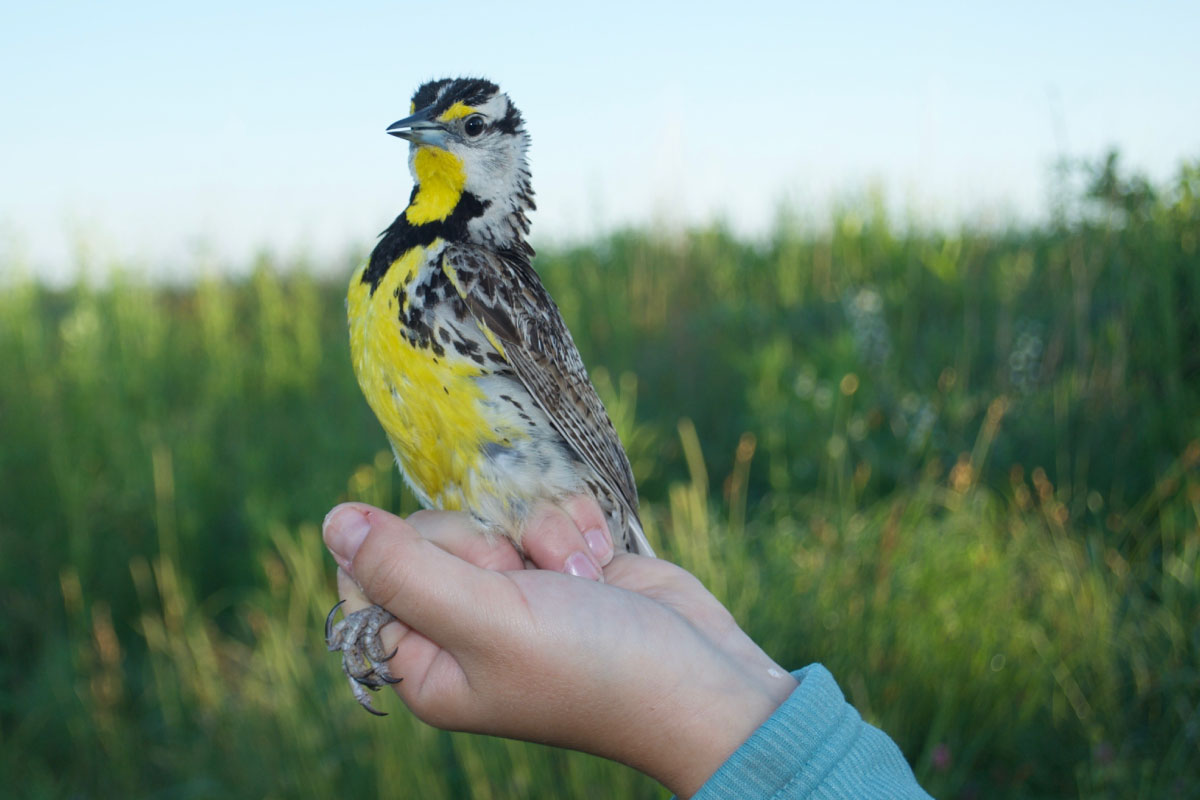
All photos by Daryl Coldren.



All photos by Daryl Coldren.
If you want to know what a bird eats, you can start with its poop. Scientists are increasingly using a technique called “DNA barcoding” to determine the exact prey species that birds and other animals commonly consume. This information is especially important when an animal’s diet can have a big economic impact. For instance, scientists estimated that birds on coffee farms increased crop yields by up to $44 per acre by eating coffee borer beetles (a tiny pest insect). And it isn’t just coffee: birds in other agricultural systems, from oil palm plantations to vineyards, have been shown to provide valuable services to farmers by eating crop pests.

Unlike coffee plantations, corn and soybean farms in Illinois aren’t often home to many birds…except when the farms are bordered by patches of prairie. Prairies provide habitat for many species of songbirds, most of which eat at least some insects during the summer. These birds generally make their nests in the prairies, but they will forage for insects in nearby farm fields. I wanted to know if birds from neighboring prairies could also provide a valuable service to corn and soybean farmers by eating pest insects.
To answer this question, I studied the birds that make their home at Nachusa Grasslands (Lee and Ogle counties) and other nearby prairie patches in northern Illinois. Nachusa Grasslands is owned by The Nature Conservancy and consists of a collection of restored and remnant prairies surrounded by agriculture. I found corn and soybean fields that were directly bordering prairie habitat and got to work collecting poop.
When it comes to collecting fecal samples for DNA barcoding, the fresher the better. With the proper permitting and training, I safely captured birds in the prairie and nearby corn and soybean fields and collected a fecal sample before releasing them. This wasn’t difficult, because when you handle wild birds, you will get a fecal sample whether you want it or not. Samples in hand, I got to work extracting the DNA from the poop.

Bird poop contains bird DNA, but it also contains tiny amounts of DNA from the food the bird has recently digested. By sequencing short sections of that food DNA and comparing the sequences to reference “libraries,” I determined which species of insects and spiders each bird had consumed.
Approximately 35 percent of the birds tested in 2016 had recently eaten the northern corn rootworm, a beetle that is an extremely damaging pest of corn crops. Corn rootworms are currently controlled by chemical pesticide application and genetic modification of crops, but there is some evidence that rootworms are beginning to develop resistance to these techniques. Knowing that birds can aid in controlling these pests may be helpful in the future. I also found evidence that birds had eaten a variety of other insect pests of locally grown crops such as alfalfa. On the other hand, some birds had also eaten “beneficial” arthropods like spiders.
In 2017 I collected samples from birds at six more soybean fields adjacent to prairies. During that summer, Japanese beetles were increasing in numbers across Illinois. Japanese beetles are a pest of soybeans as well as a lot of other plants. You may have seen them in your garden munching on your roses or tomato plants. Unsurprisingly, the increased availability of these pests made them an attractive food for birds. I found that almost 20 percent of birds had recently eaten Japanese beetles. Birds chowed down on mosquitoes as well: approximately 25 percent of birds tested had consumed a common species of mosquito which is known to carry diseases. The variety of insects consumed by birds varied across the sites where I captured them, but Japanese beetle consumption was constant across all the sites.

What does this mean for corn and soybean farms in Illinois? Obviously, most Illinois farms can’t benefit from pest-eating birds in a convenient nearby prairie. But there are other ways that farmers can encourage birds to eat insects on their property. The most important thing is to make sure that birds have natural habitat for nesting nearby, even if it isn’t a large area. Hedgerows surrounding fields can provide important nesting habitat for birds, and even small strips of prairie plantings can increase the density of birds on a farm. By making small changes surrounding the farm, we can encourage birds to provide this free and valuable pest control service even in large corn and soybean fields.
Megan Garfinkel is a post-doctoral researcher at the University of Illinois at Chicago. She has studied birds living on all sorts of farms, including Kenyan coffee plantations, organic farms in California, and corn and soybean farms in Illinois.
Submit a question for the author
Question: I wonder what would be a very vivid dark iridescent blue bird slightly bigger than a humming bird, but half the size of an indigo indigo bunting in central Illinois. Looked like the bird in the bottom photo, only significantly smaller.